Geology Reference
In-Depth Information
particular shot. In shot gathers, the seismic traces are
plotted side by side in their correct relative positions and
the records are commonly displayed with their time axes
arranged vertically in a draped fashion. In these seismic
records, recognition of reflection events and their corre-
lation from trace to trace is much assisted if one half of the
normal 'wiggly-trace' waveform is blocked out. Figure
4.8 shows a draped section with this mode of display, de-
rived from a split-spread multichannel survey. A short
time after the shot instant the first arrival of seismic ener-
gy reaches the innermost geophones (the central traces)
and this energy passes out symmetrically through the
two arms of the split spread.The first arrivals are followed
by a series of reflection events revealed by their hyper-
bolic moveout.
4.3.3 The CMP gather
Each seismic trace has three primary geometrical factors
which determine its nature.Two of these are the shot po-
sition and the receiver position. The third, and perhaps
most critical, is the position of the subsurface reflection
point. Before seismic processing this position is un-
known, but a good approximation can be made by as-
suming this reflection point lies vertically under the
position on the surface mid-way between the shot and
receiver for that trace.This point is termed the
mid-point
.
Older terminology is to call this point the
depth point
,
but the former term is a description of what the position
is, rather than what it is wished to represent, and is hence
preferred. Collecting all the traces with a common mid-
point forms a
common mid-point (CMP) gather
(Fig. 4.9).
The seismic industry and the literature use the older
term
common depth point (CDP)
interchangeably for
CMP.
The CMP gather lies at the heart of seismic processing
for two main reasons:
1.
The simple equations derived in Section 4.2 assume
horizontal uniform layers. They can be applied with
less error to a set of traces that have passed through the
same geological structure. The simplest approximation
to such a set of traces is the CMP gather. In the case of
horizontal layers, reflection events on each CMP gather
are reflected from a common depth point (CDP - see
Fig. 4.9(a)). For these traces, the variation of travel time
with offset, the moveout, will depend only on the veloc-
ity of the subsurface layers, and hence the subsurface
velocity can be derived.
2.
The reflected seismic energy is usually very weak. It is
imperative to increase the signal-to-noise ratio of most
Fig. 4.8
A draped seismic record of a shot gather from a split
spread (courtesy Prakla-Seismos GmbH). Sets of reflected arrivals
from individual interfaces are recognizable by the characteristic
hyperbolic alignment of seismic pulses.The late-arriving, high-
amplitude, low-frequency events, defining a triangular-shaped
central zone within which reflected arrivals are masked, represent
surface waves (ground roll).These latter waves are a typical type of
coherent noise.
data. Once the velocity is known, the traces in a CMP
can be corrected for NMO to correct each trace to the
equivalent of a
zero-offset trace
. These will all have the
same reflected pulses at the same times, but different

